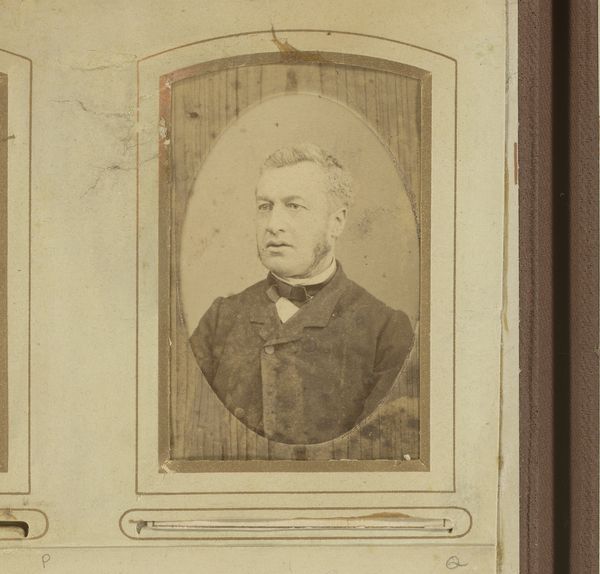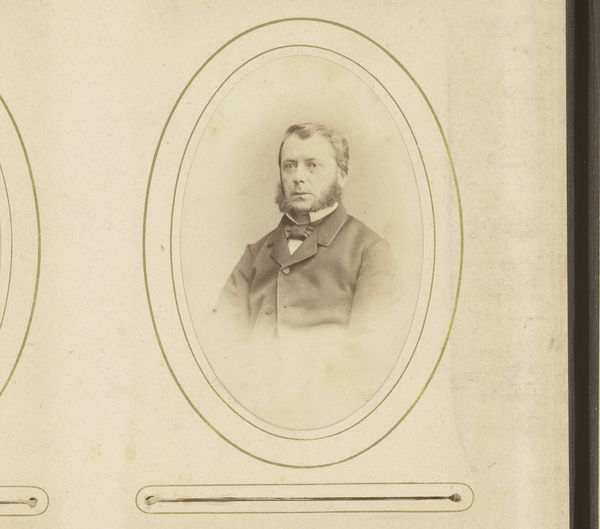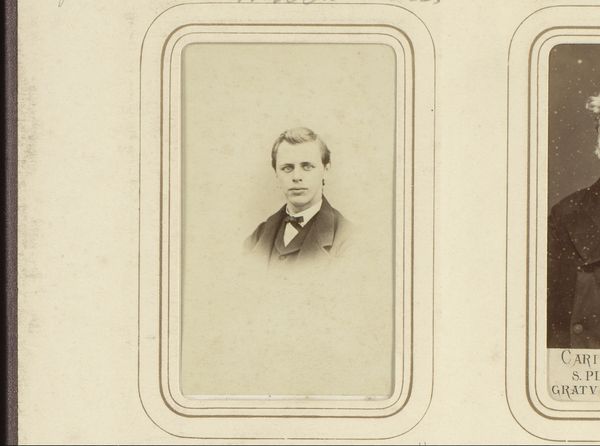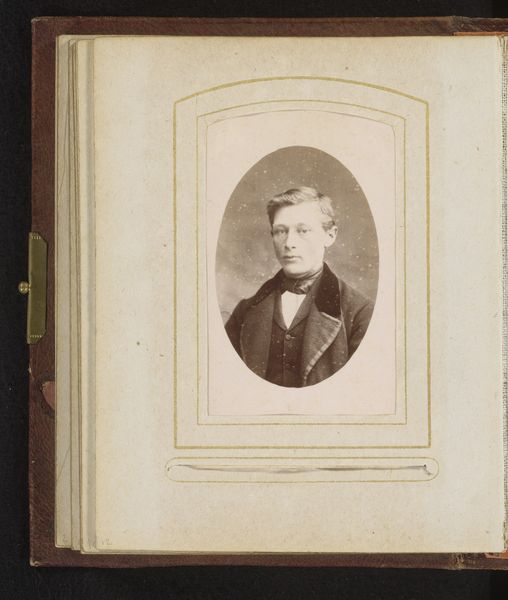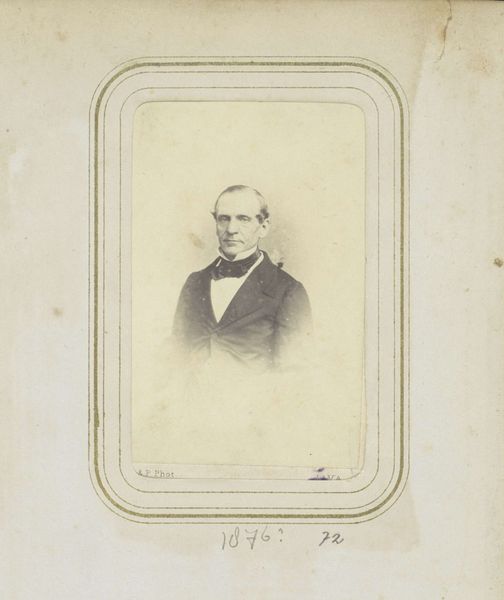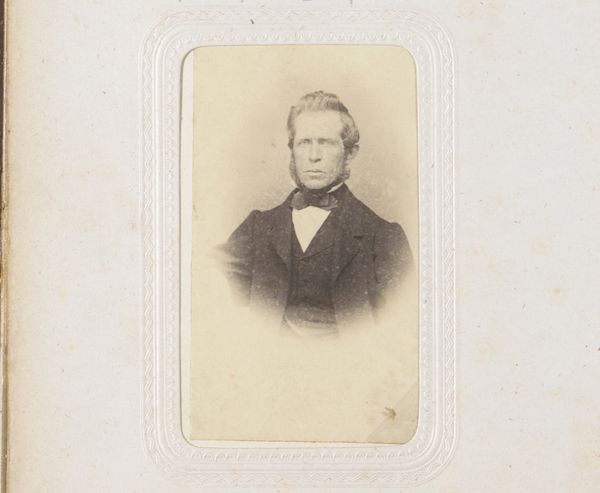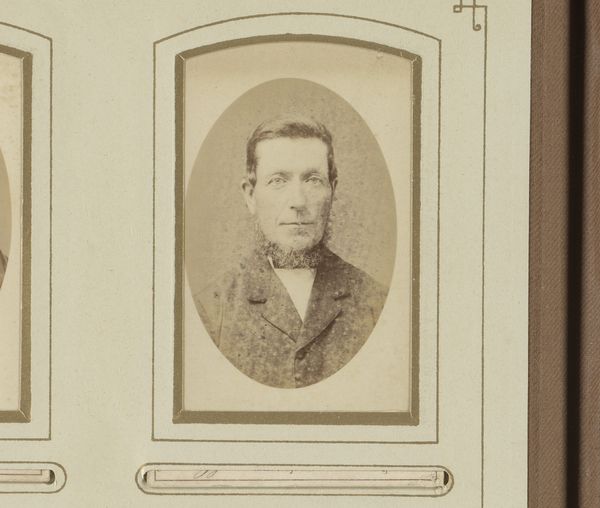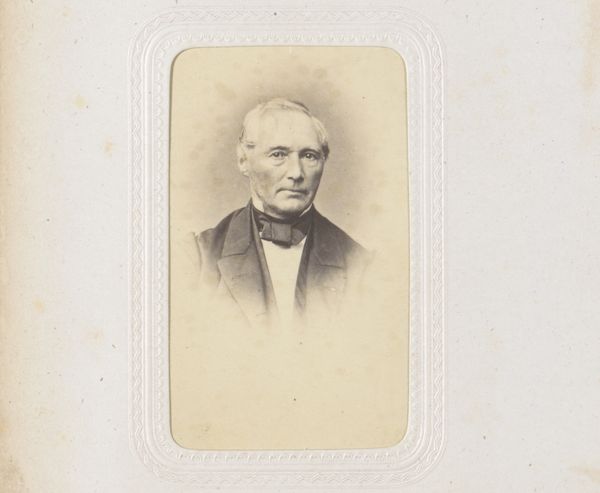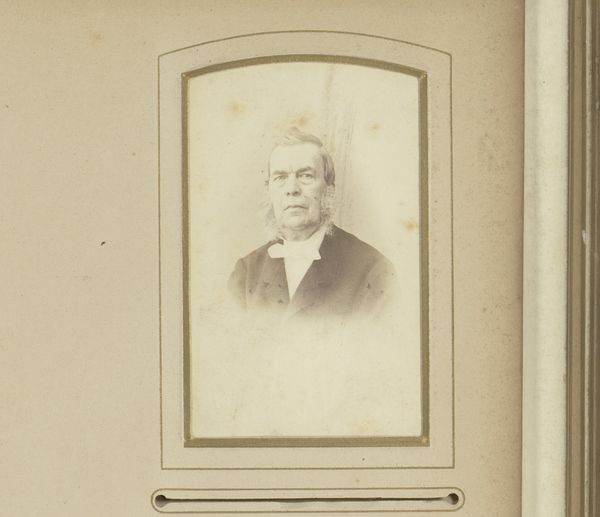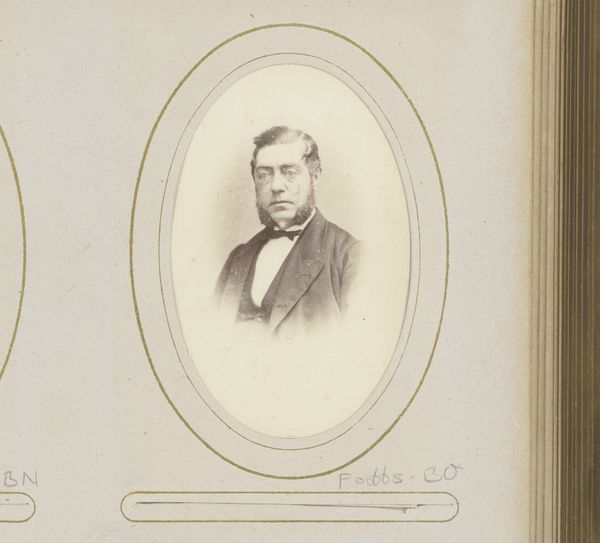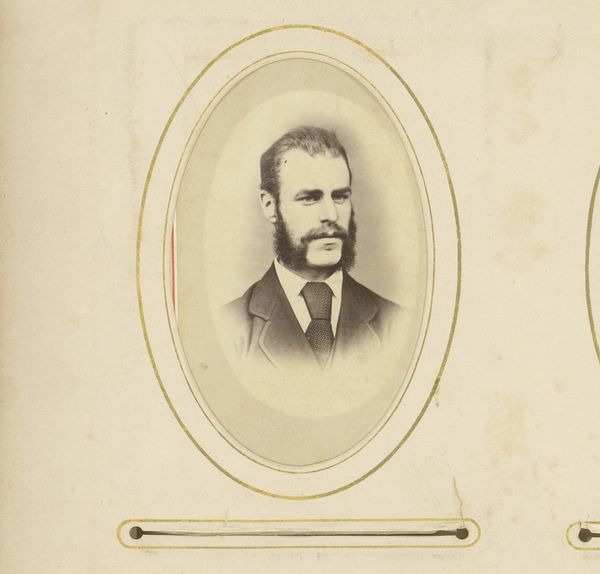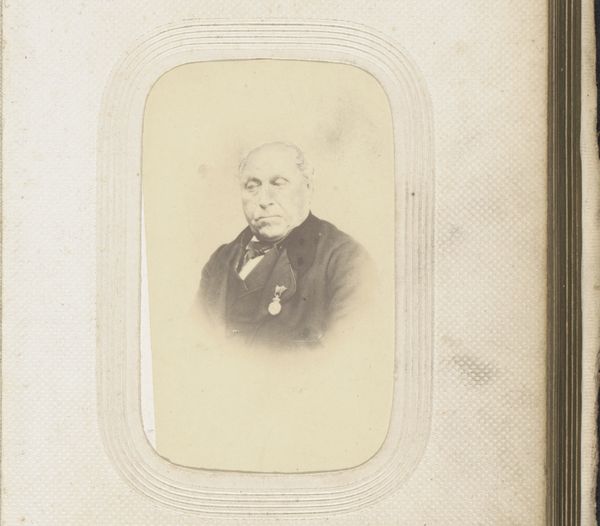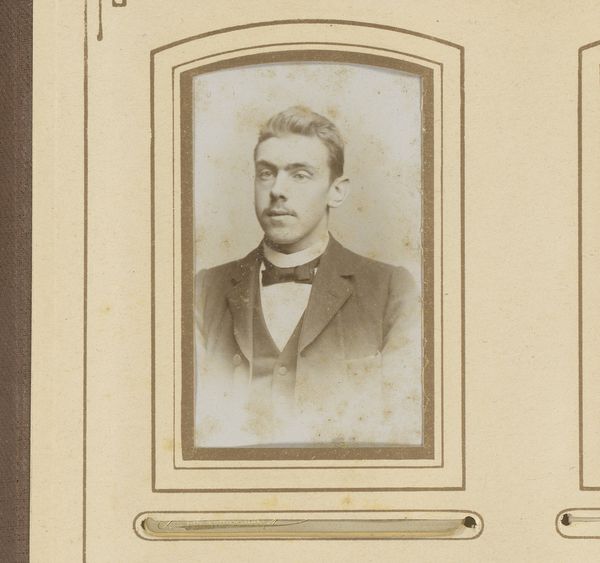
photography
#
portrait
#
aged paper
#
toned paper
#
photography
#
personal sketchbook
#
realism
Dimensions: height 82 mm, width 50 mm
Copyright: Rijks Museum: Open Domain
Editor: Here we have an aged photograph, "Portret van een man, aangeduid als W. Huijgens" by Christiaan Martinus Jan Hermelink, dated sometime between 1867 and 1885. The subject is a man in formal wear, and there’s this sense of rigid formality about the portrait. What can you tell me about this piece? Curator: This photograph, likely a "carte de visite," offers a powerful lens through which to examine 19th-century societal structures. Notice the subject's formal attire; it signifies a certain level of social standing, doesn't it? Think about how the rise of photography democratized portraiture, allowing the middle class to participate in image-making that was previously reserved for the elite. What does it mean that this individual felt it necessary to project such an image of himself? Editor: I guess it’s about projecting an image of success and respectability. The stiff pose and serious expression add to that feeling. But was there also a racial dimension at play here? Curator: Precisely. While the subject appears to be white, photographic portraiture was strategically deployed in the construction of racial identities. Consider its use in scientific studies aiming to categorize and differentiate racial groups, often reinforcing existing power dynamics. This man’s photograph exists within a broader context where images were – and still are – tools for defining who belongs and who doesn’t. In what ways does photography continue to reinforce or challenge these structures today? Editor: That’s fascinating. I never considered photography as such a complex tool. It makes you think about how carefully constructed all images are, even back then. Curator: Exactly! It’s crucial to analyze the visual language employed and how it connects to larger cultural and political narratives. By critically examining these historical portraits, we gain insight into how identities were shaped, negotiated, and sometimes, imposed. Editor: I’ll definitely look at portraits differently now. Thanks for shedding light on those important connections!
Comments
No comments
Be the first to comment and join the conversation on the ultimate creative platform.
